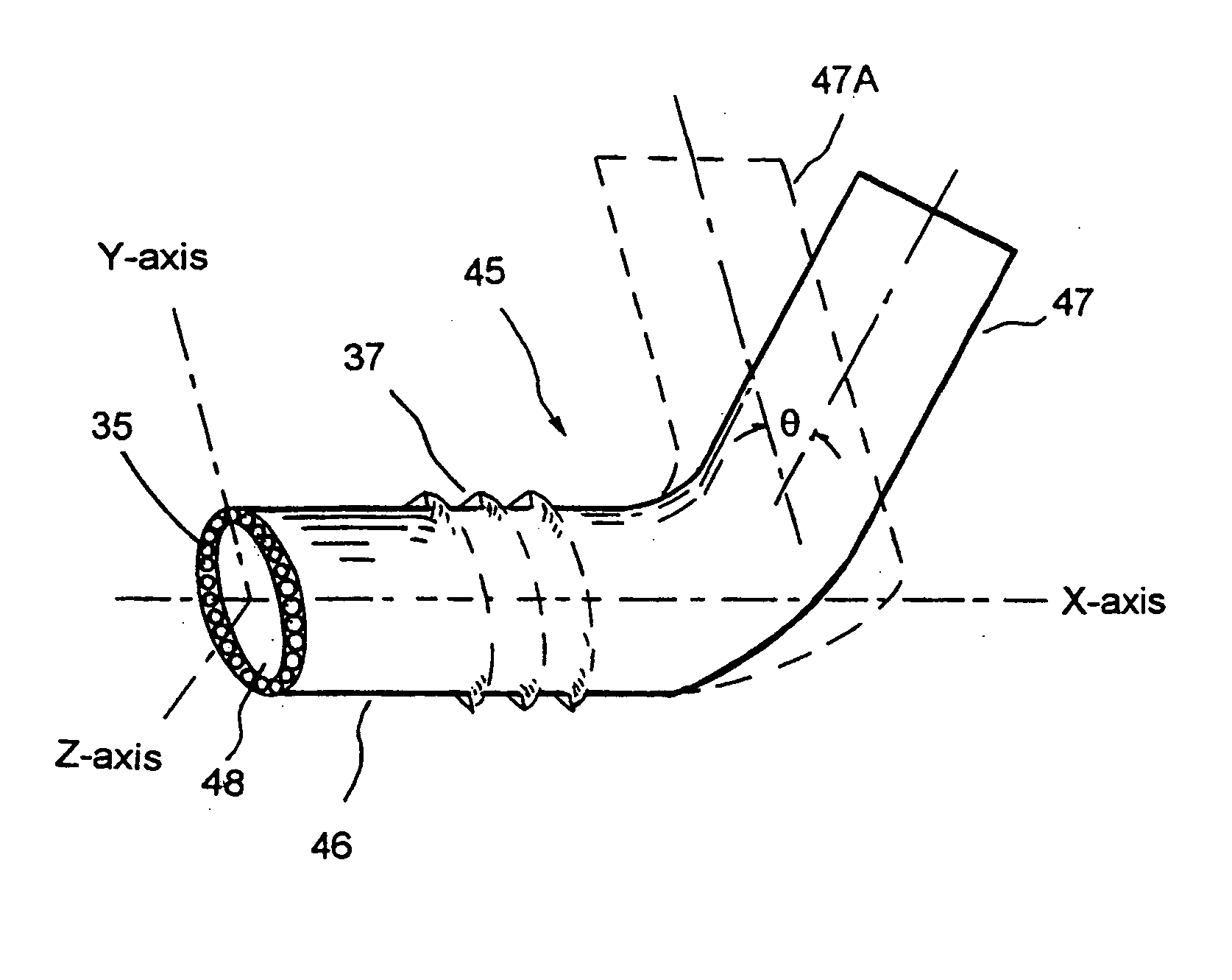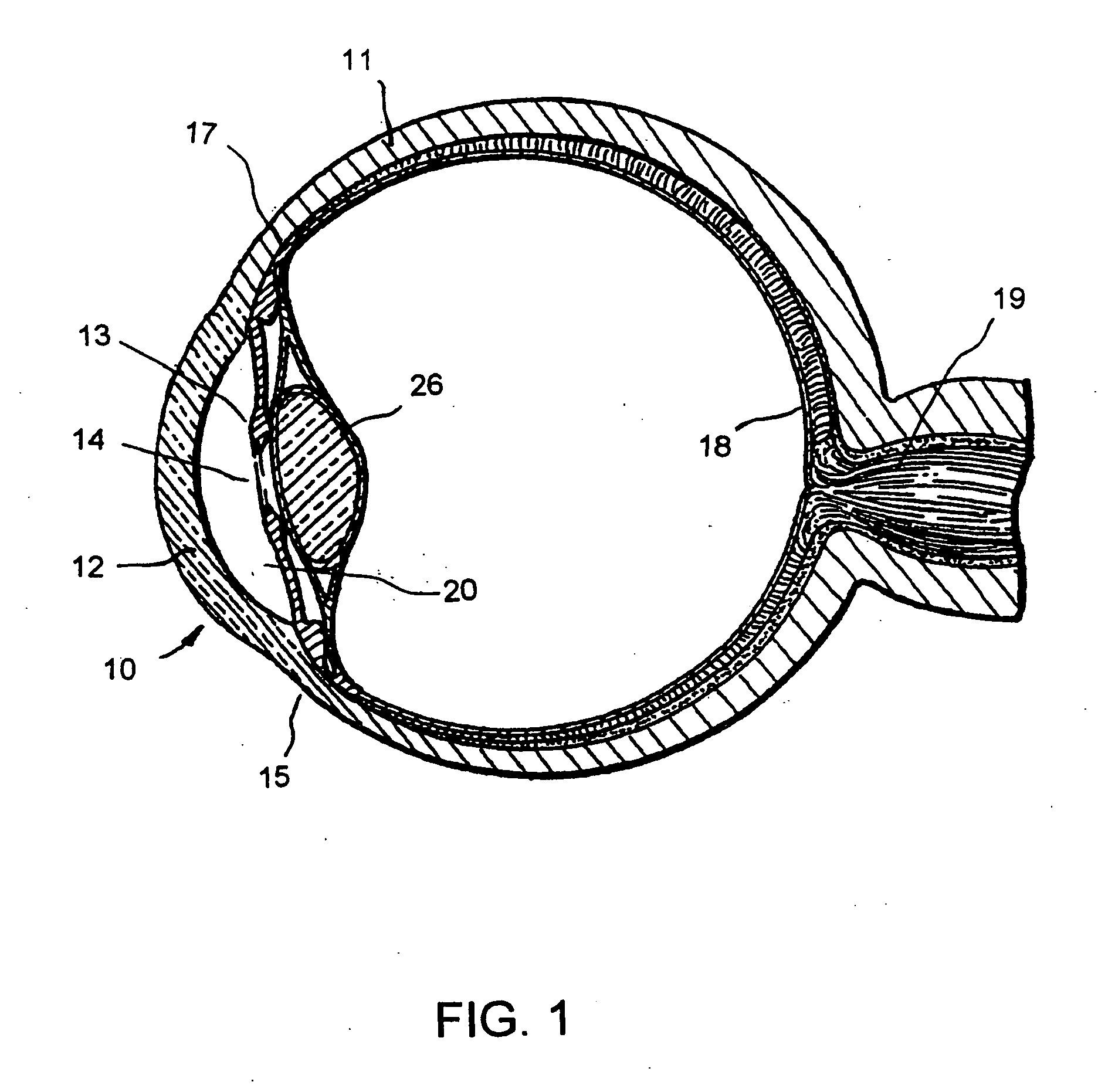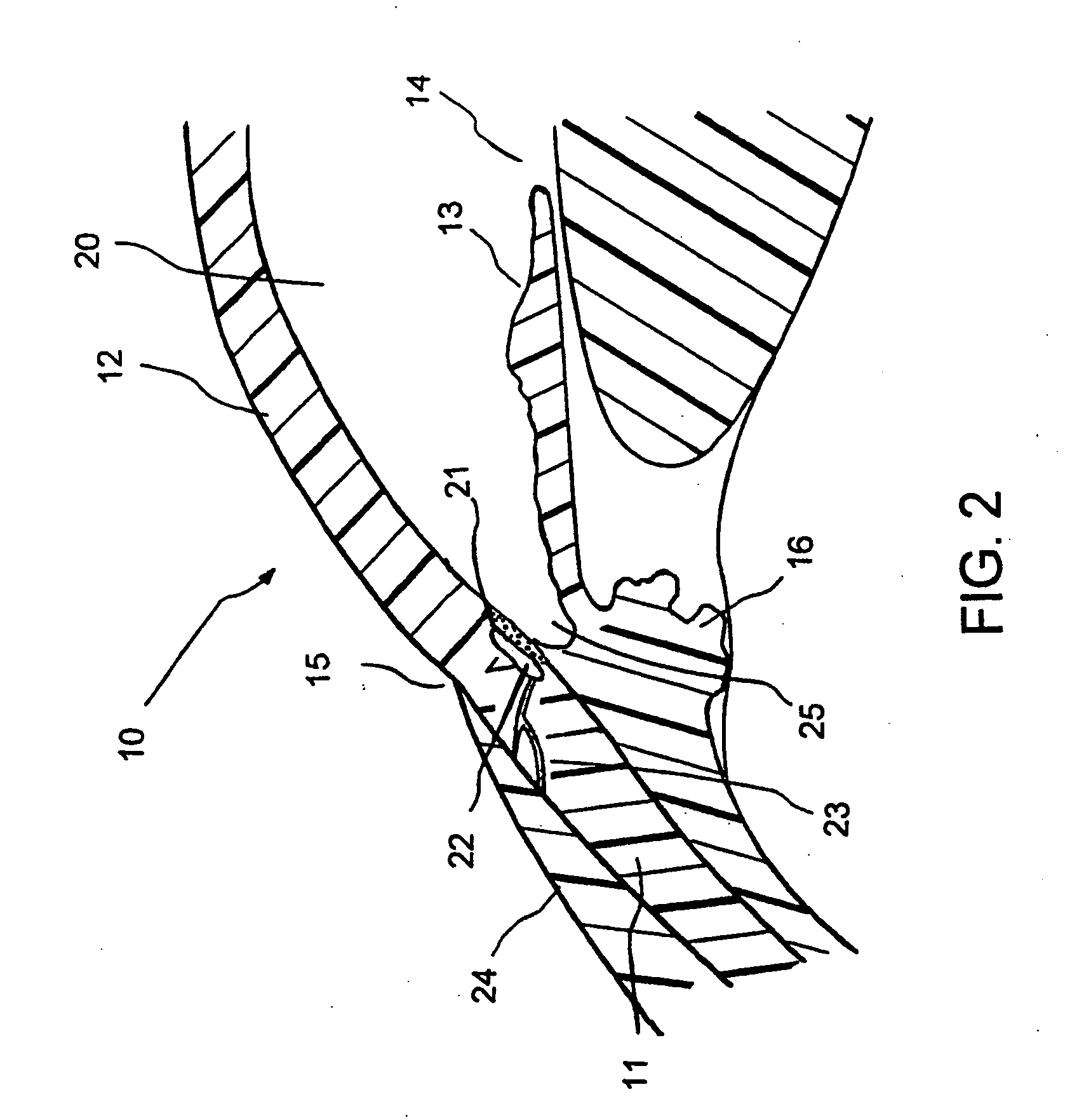Ophthalmology implants and methods of manufacture
a technology of ophthalmology implants and manufacturing methods, applied in the field of medical devices, can solve the problems of glaucoma drug therapy sometimes associated with significant side effects, patients may suffer substantial blindness if untreated, and patients may suffer irreversible vision loss
- Summary
- Abstract
- Description
- Claims
- Application Information
AI Technical Summary
Benefits of technology
Problems solved by technology
Method used
Image
Examples
example no.1
EXAMPLE NO. 1
Nano-Coatings
[0059] A drug-eluting angioplasty balloon '(manufactured by MILLIMED, Helsingborg, Sweden) delivers a bolus dose of nitric oxide to the angioplastic site during the balloon procedure. It was believed that nitric oxide is a vasodilator and has anti-inflammatory and antiplatelet effects on cells in the vessel wall that may prevent the cell proliferation that can lead to restenosis. The coating on MILLIMED's balloon is made of a polymer into which nitric oxide is incorporated. The polymer is manufactured on a molecular level (nanometer-sized) using an electrical field and is spun into very thin, strong fibers (as small as 3 to 10 molecules in thickness) with enhanced strength, flexibility, porosity and drug-carrying capability.
[0060] The balloon coating of a MILLIMED's balloon provides a high bolus dose of nitric oxide at the time of inflation. Although the nitric oxide does not linger in the cells lining the vessel wall, it is believed that the bolus dose c...
example no.2
EXAMPLE NO. 2
[0070] Synthesis of 3-dimensional Nanofibrous Matrices Containing Recombinant Collagen: Nanofibrillar matrices were synthesized using polymers with free NH2 groups for the covalent binding of collagen (Zheng et al. In Vitro Cell Devel. Biol. Anim. 1998 34:679-84). Specifically, poly(L-lactic acid) (MW 200,000; Polysciences, Inc) was mixed with poly(ε-CBZ-L-lysine) (MW 260,000; Sigrna) at a 4:1 ratio. The carbobenzoxy (CBZ)-protected form of L-lysine was used to prevent involvement of side chain groups in the formation of a CONH bond during peptide synthesis. A mixture of polymers was then dissolved in chloroform and used to generate nanofibrillar material in the electrostatic spinning process. In this nonmechanical technique, a high electric field is generated between a polymer fluid contained in a glass syringe with a capillary tip and a metallic collection screen. When the voltage reaches a critical value, the charge overcomes the surface tension of the deformed drop ...
PUM
 Login to View More
Login to View More Abstract
Description
Claims
Application Information
 Login to View More
Login to View More - R&D
- Intellectual Property
- Life Sciences
- Materials
- Tech Scout
- Unparalleled Data Quality
- Higher Quality Content
- 60% Fewer Hallucinations
Browse by: Latest US Patents, China's latest patents, Technical Efficacy Thesaurus, Application Domain, Technology Topic, Popular Technical Reports.
© 2025 PatSnap. All rights reserved.Legal|Privacy policy|Modern Slavery Act Transparency Statement|Sitemap|About US| Contact US: help@patsnap.com



